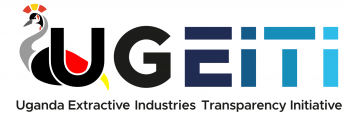Extractive Sector in Uganda
Uganda is well endowed with an abundance of natural resources which serve as raw materials for many industries, and supplement household incomes. The Government of Uganda is now giving greater prominence to the extractive sector in line with the Uganda Vision 2040 and National Development Plan (NDP III) that prioritized investments in extractives.
Petroleum
In 2006, deposits rich in oil were discovered in Uganda equivalent to approximately 6.5 billion barrels of crude oil, with an estimated 1.4 billion barrels deemed recoverable. In addition, an estimated five hundred (500) billion standard cubic feet (BCF) of natural gas resources were also discovered (The Albertine Graben region is the most prospective sedimentary basin with 40% of it explored and less than 15% under license).
Uganda’s Oil and Gas subsector is guided by the National Oil and Gas Policy of 2008 whose goal is to sustainably explore and develop the country’s resources. This policy is operationalized by the following laws:
- The Petroleum (Exploration, Development and Production) Act, 2013; that governs upstream activities.
- The Petroleum (Refining, Conversion, Transmission and Midstream Storage) Act, 2013; governing the midstream activities.
- Public Finance Management Act, 2015; that strengthened accountability and transparency in the use of public resources.
The roles of regulators and policy oversight in this sector have been streamlined and separated.
The Directorate of Petroleum (DoP) under the Ministry of Energy and Mineral Development (MEMD) is mandated to establish, promote the development, licensing and policy initiations in the country. In addition, the Petroleum Authority of Uganda (PAU) and the Uganda National Oil Company (UNOC) which were operationalized to regulate the petroleum industry and manage the country’s commercial interests respectively.
Under the Upstream subsector, the country has completed two (2) competitive licensing rounds. In 2016 nine (9) production licenses out of the fourteen (14) field discoveries were issued i.e., the Tilenga project in Buliisa and Nwoya Districts as well as the Kingfisher project in Hoima and Kikuube Districts. In 2017, two more exploration licenses were issued, introducing Oranto Petroleum from Nigeria and Armour Energy from Australia. These joined TotalEnergies and CNOOC Uganda as key players in the sector.
Investments in the Midstream subsector are intended to promote, monitor and regulate petroleum refining, gas conversion, storage and bulk transportation. The sector currently employs over 1,000 people both directly and indirectly. The key projects under this sector include the construction of Kabaale Industrial Park and International Airport, a 60,000 BoPD greenfield refinery and the 1445km East African Crude Oil Pipeline (EACOP) from Hoima in Uganda to Tanga port Tanzania.
Mining and Quarrying
The history of mineral exploration in Uganda dates back to the early 1950’s when the largest mine in the country, Kilembe Copper Mines located on the edges of Mt. Rwenzori, held the country’s largest deposits of copper and iron ore.
In order to realize the aspirations of Vision 2040, the country’s Ministry charged management of the sector undertook airborne geophysical surveys across the country. This led to discoveries of over eighteen (18) new potential mineral targets. As of 2019, the completed surveys had spurred the current investment in mineral exploration to over USD 1.6 billion.
Among the key potential mineral discoveries made were Iron ore reserves of about 350 million tonnes, over 1 billion tonnes of Marble, approximately 12 million ounces of Gold, 1.7 billion tonnes of Graphite, 300 million tonnes of proven reserves of Rare Earth Elements (REE) and an estimated 3 billion tons of Kaolin.
Metallic Minerals
Metallic minerals are one of the two (2) categories used by Uganda Bureau of Statistics (UBOS), the country’s statistical institution, in analysis of the sector. These minerals contain extractable metals in their chemical composition. They include Gold, Iron Ore, Zinc, Tin, Copper-Cobalt, Lead, Beryllium, Wolfram, Bismuth bismutite, Chromium, Lithium and Titanium.
Non-metallic Minerals
The Non-metallic minerals, as the other category, do not contain extractable metals in their chemical composition. They include Bentonite, Diatomite, Kaolin, Limestone, Marble, Vermiculite, Gypsum, Phosphates, Feldspar, Aggregate, Crushed and Dimension Stone, Glass sands, Sand, Clays and Salt. Further mineral exploration has indicated the potential for Uranium, Platinum Group Minerals, Nickel, Diamonds and Rare Earth Elements.
The Ministry of Energy and Mineral Development (MEMD), through the Directorate of Geological Survey (DGSM) is charged with granting and monitoring performance of all mineral licenses. They are also tasked to undertake collection, processing, analysis and dissemination of geo data and production statistics to establish mineral potential. The Directorate is governed by the Mineral Policy 2001, the Mining Act 2003 and Mining Regulations 2004.
In 2019/2020, limestone was the leading mineral extracted in Uganda. The rest of the minerals experienced decline in production due to the uncertainty caused by the impacts of Covid-19 and the Presidential ban on exports of unprocessed minerals. Consequently, the current contribution to GDP from the Mining and Quarrying sector for the financial year 2020-2021 was 1.8%.
The sector employs approximately 26.5% of the Uganda’s population is dominated by Artisanal and Small-scale Miners (ASMs) that use rudimentary methods of mining. They are supported mainly by three gold refineries (Africa Gold Refinery, Bullion and Simba). Their operations enabled the country to register gold exports of USD 450 million from gold mining. Progress has also been made towards the production of sponge iron, with Tembo Steel Ltd putting up 72,000 tonne capacity sponge iron plants in Iganga.
